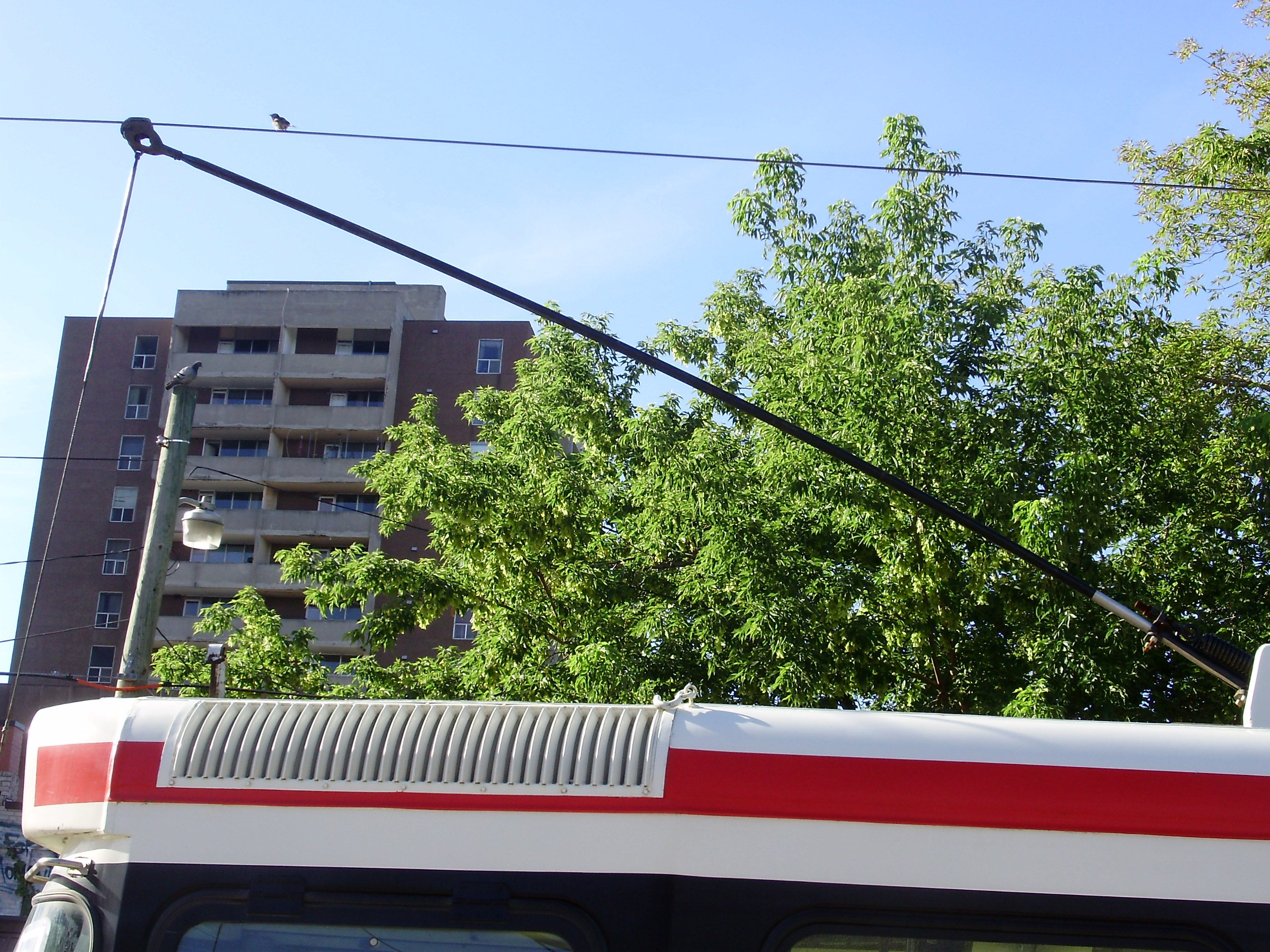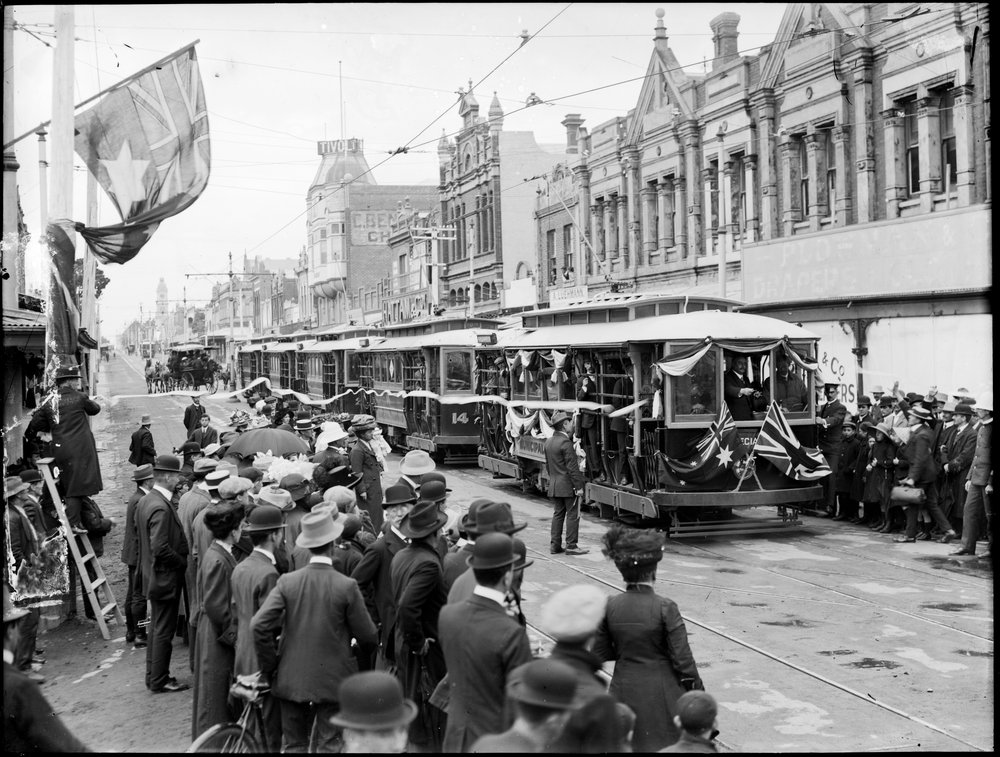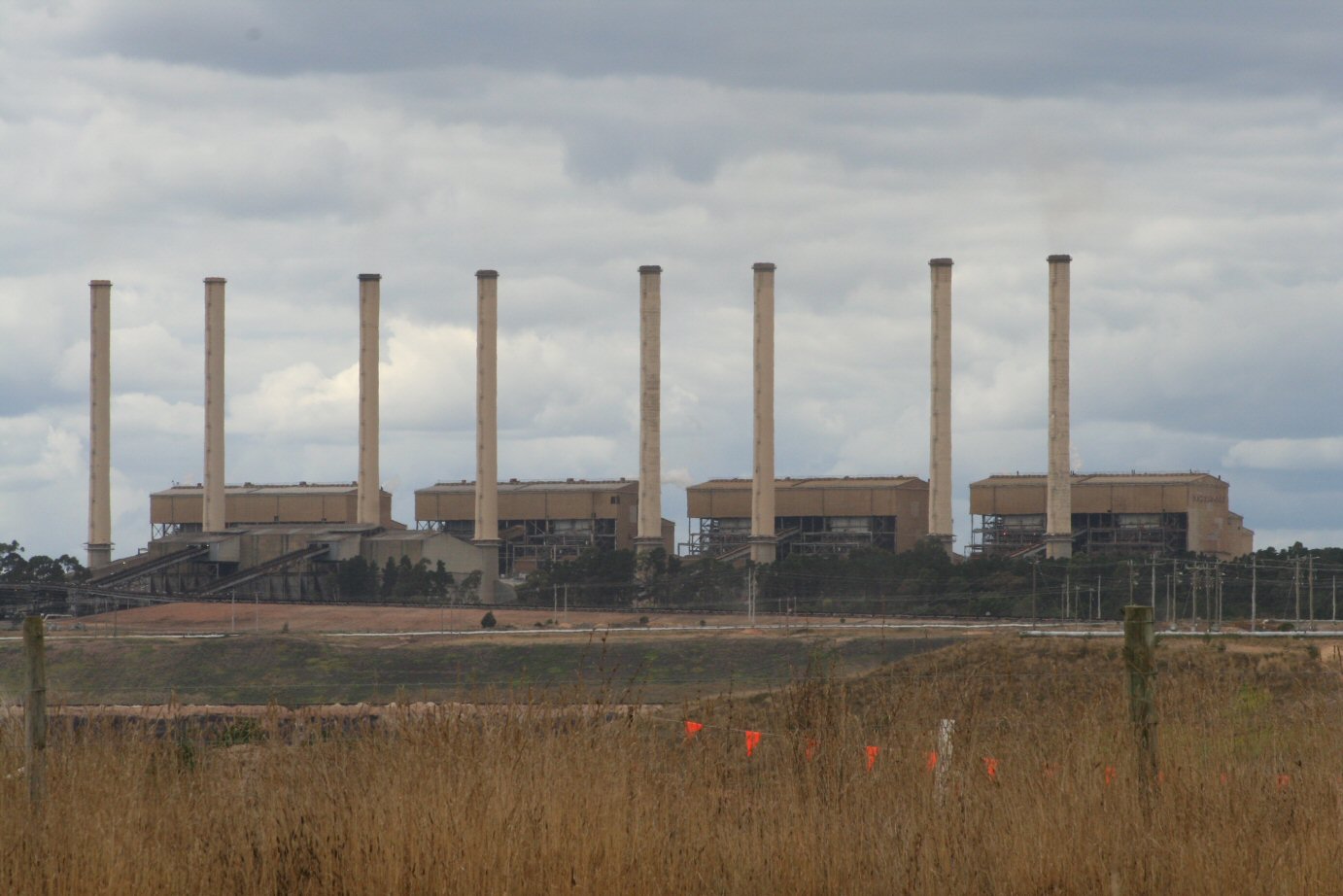|
E-class Melbourne Tram (first)
The E-class was a group of 10 trams built by Duncan & Fraser, Adelaide, for the Prahran & Malvern Tramways Trust (P&MTT) in 1914, numbered 36 to 45. Number 36 was converted to a different form by the P&MTT , and was later designated D-class. All retained their fleet numbers when passed to the Melbourne & Metropolitan Tramways Board (M&MTB) after it took over the P&MTT on 2 February 1920, and they were designated E-class sometime after October 1921. By late 1923, together with other all M&MTB drop-end-and-centre Maximum Traction trams, they were re-classed as C-class trams. The 22E Maximum Traction trucks were of JG Brill design, although manufactured by Brush in England. Vicsig In 1917 and 1919, all trams had their 2 x 50 hp GE 202 motors replaced by 2 x 65 hp GE 201G, and in late 1920 all had their original track and electrical brake ... [...More Info...] [...Related Items...] OR: [Wikipedia] [Google] [Baidu] |
E-class Melbourne Tram
The E-class trams are three-section, four-bogie articulated trams that were first introduced to the Melbourne tram network in 2013, built at the Dandenong works of Bombardier Transportation (later Alstom) with the propulsion systems and bogies coming from Bombardier/Alstom factories in Germany. The E-class is part of the Tram Procurement Program, a Public Transport Victoria project aimed at increasing capacity and reliability of the tram network through the introduction of new trams, creation of new depot space, and upgrades to existing infrastructure. In September 2010, 50 were ordered with an option to purchase a further 100. In May 2015, a further 20 were ordered, followed by additional orders for 10 in May 2017, September 2018 and May 2019, taking the total to 100. The first tram was delivered in June 2013 and, after testing, entered service on route 96 on 4 November 2013. History E1-class In July 2009, the Victorian Government called for expressions of interest for ... [...More Info...] [...Related Items...] OR: [Wikipedia] [Google] [Baidu] |
Duncan & Fraser
Duncan & Fraser Limited was a vehicle manufacturing company founded in 1865 in Adelaide, South Australia that built horse-drawn carriages and horse trams, and subsequently bodies for trains, electric trams and motor cars, becoming one of the largest carriage building companies in Australia. In 1919 the company decided to abandon coachbuilding and confine itself to automotive manufacture; by 1927 the construction of Ford Model T motor car bodies had become the company's principal activity and the company was operating automotive distributorships and dealerships. However, the succeeding Ford Model A required an all-steel body, which Ford's US headquarters decided would be made in Canada and assembled in Ford's own factory in Geelong. Since most of the company's income had consequently ceased, the shareholders voted in August 1927 to close the company. Horse-drawn carriages In January 1865, coach builder James Duncan and coach painter James Fraser – Scottish immigrants to Adela ... [...More Info...] [...Related Items...] OR: [Wikipedia] [Google] [Baidu] |
Adelaide
Adelaide ( ) is the capital city of South Australia, the state's largest city and the fifth-most populous city in Australia. "Adelaide" may refer to either Greater Adelaide (including the Adelaide Hills) or the Adelaide city centre. The demonym ''Adelaidean'' is used to denote the city and the residents of Adelaide. The Traditional Owners of the Adelaide region are the Kaurna people. The area of the city centre and surrounding parklands is called ' in the Kaurna language. Adelaide is situated on the Adelaide Plains north of the Fleurieu Peninsula, between the Gulf St Vincent in the west and the Mount Lofty Ranges in the east. Its metropolitan area extends from the coast to the foothills of the Mount Lofty Ranges, and stretches from Gawler in the north to Sellicks Beach in the south. Named in honour of Queen Adelaide, the city was founded in 1836 as the planned capital for the only freely-settled British province in Australia. Colonel William Light, one of Adelaide's foun ... [...More Info...] [...Related Items...] OR: [Wikipedia] [Google] [Baidu] |
Trolley Pole
A trolley pole is a tapered cylindrical pole of wood or metal, used to transfer electricity from a "live" (electrified) overhead wire to the control and the electric traction motors of a tram or trolley bus. It is a type of current collector. The use of overhead wire in a system of current collection is reputed to be the 1880 invention of Frank J. Sprague, but the first working trolley pole was developed and demonstrated by Charles Van Depoele, in autumn 1885. Middleton, William D. (1967). ''The Time of the Trolley'', pp. 63–65, 67. Milwaukee: Kalmbach Publishing. . Etymology The term "trolley", also used to describe the pole or the passenger car using the trolley pole, is derived from the grooved conductive wheel attached to the end of the pole that "trolls" the overhead wire. The term "trolley" predates the invention of the trolley pole. The earliest electric cars did not use a pole, but rather a system in which each tramcar dragged behind it an overhead cable connected ... [...More Info...] [...Related Items...] OR: [Wikipedia] [Google] [Baidu] |
Brush Traction
Brush Traction is a manufacturer and maintainer of railway locomotives in Loughborough, England. It is a subsidiary of Wabtec. History Hughes's Locomotive & Tramway Engine Works Henry Hughes had been operating at the Falcon Works since the 1850s, producing items such as brass and iron cast parts for portable engines and thrashing machines. In 1860 Henry Hughes announced he had entered into a partnership with William March who had extensive experience in the timber trade, and this would be added to the existing business of "engineers and manufacturers of railway plant", with the business to be called Hughes and March. In March 1863, Hughes announced it was making a steam locomotive designed for contractors and mineral railways. This was an 0-4-0 saddle tank with a 200 psi boiler pressure and cylinders of 10 inch bore and 15 inch stroke. In 1866, Hughes announced a sale of timber and associated equipment from the "Falcon Railway Plant Works" as he had decided to close down ... [...More Info...] [...Related Items...] OR: [Wikipedia] [Google] [Baidu] |
Prahran & Malvern Tramways Trust
The Prahran and Malvern Tramways Trust (PMTT) was a former tram operator in Melbourne, Australia. The trust was formed in 1907, with its first line operating in 1910. Its functions were taken over by the Melbourne & Metropolitan Tramways Board in 1920. History The PMTT was formed under the ''Prahran & Malvern Tramways Trust Act 1907'' to construct and operate electric trams in the municipalities of Prahran and Malvern. The original members of the trust were Alexander Cameron (Chairman), W. O. Strangward (Secretary), H.S. Dix (Manager and Engineer), S. Bangs, William Knox MLC, Walter Lewis and Thomas Luxton. Noyes Brothers were selected as the primary contractors for the work. The first rail was laid along High Street on 20 October 1909. Malvern tram depot opened on 30 May 1910 as were the first lines: along High Street from Charles Street, Prahran to Tooronga Road and the other along Glenferrie and Wattletree Roads from High Street to Burke Road. In 1910, the PMTT was recon ... [...More Info...] [...Related Items...] OR: [Wikipedia] [Google] [Baidu] |
D-class Melbourne Tram (first)
Prahran & Malvern Tramways Trust (P&MTT) tram No.36 was one of a batch of ten E-class Melbourne tram (first), Maximum Traction bogie cars built in 1914 by Duncan & Fraser, Adelaide. Although the lowest numbered of this group, it was the last to enter service, and was the first P&MTT tram to be equipped with 2 x 65 hp General Electric, GE 201G motors. Subsequently, all other P&MTT Maximum Traction bogie cars were later retro-fitted with the same type of motors. The 22E Maximum Traction trucks were of JG Brill Company, JG Brill design, although manufactured by Brush in England. In preparation for the proposed use of conductresses during World War I, No.36 was modified by enclosing some doorways and altering the seating layout to include a centre aisle the length of the tram. However, the use of conductresses did not eventuate at this time, indeed this did not occur in Melbourne until 1941. This was the only Melbourne tram so treated, and this modification later caused the Melbou ... [...More Info...] [...Related Items...] OR: [Wikipedia] [Google] [Baidu] |
Melbourne & Metropolitan Tramways Board
The Melbourne & Metropolitan Tramways Board (MMTB) was a government-owned authority that was responsible for the tram network in Melbourne, Australia between 1919 and 1983, when it was merged into the Metropolitan Transit Authority. It had been formed by the merger of a number of smaller tramway trusts and companies that operated throughout the city. History In 1869 Francis Boardman Clapp set up the Melbourne Omnibus Company (MOC) which ran horse-drawn trams in the inner suburbs of Melbourne. The company carried five million passengers. By 1882 the company had over 1,600 horses and 178 omnibuses. In 1885 the company carried 11.7 million passengers. In 1885 Clapp's MOC was granted a 30-year exclusive franchise for a cable tram network in Melbourne, with no competing lines being permitted. Clapp reorganised the company as the Melbourne Tramway & Omnibus Company (MTOC). A total of 15 lines were built, opening progressively between 1885 and 1919. The first serious electric t ... [...More Info...] [...Related Items...] OR: [Wikipedia] [Google] [Baidu] |
JG Brill Company
The J.G. Brill Company manufactured streetcars,Young, Andrew D. (1997). ''Veteran & Vintage Transit'', p. 101. St. Louis: Archway Publishing. interurban coaches, motor buses, trolleybuses and railroad cars in the United States for almost ninety years, making it the longest-lasting trolley and interurban manufacturer. At its height, Brill was the largest manufacturer of streetcars and interurban cars in the US and produced more streetcars, interurbans and gas-electric cars than any other manufacturer, building more than 45,000 streetcars alone. The company was founded by John George Brill in 1868 in Philadelphia, as a horsecar manufacturing firm. Its factory complex was located in south-west Philadelphia at 62nd St and Woodland Avenue, adjacent to the Baltimore and Ohio Railroad tracks. Over the years, it absorbed numerous other manufacturers of trolleys and interurbans, such as Kuhlman in Cleveland and Jewett in Indiana. In 1944, with business diminishing, it merged ... [...More Info...] [...Related Items...] OR: [Wikipedia] [Google] [Baidu] |
World War II
World War II or the Second World War, often abbreviated as WWII or WW2, was a world war that lasted from 1939 to 1945. It involved the vast majority of the world's countries—including all of the great powers—forming two opposing military alliances: the Allies and the Axis powers. World War II was a total war that directly involved more than 100 million personnel from more than 30 countries. The major participants in the war threw their entire economic, industrial, and scientific capabilities behind the war effort, blurring the distinction between civilian and military resources. Aircraft played a major role in the conflict, enabling the strategic bombing of population centres and deploying the only two nuclear weapons ever used in war. World War II was by far the deadliest conflict in human history; it resulted in 70 to 85 million fatalities, mostly among civilians. Tens of millions died due to genocides (including the Holocaust), starvation, ma ... [...More Info...] [...Related Items...] OR: [Wikipedia] [Google] [Baidu] |
State Electricity Commission Of Victoria
The State Electricity Commission of Victoria (SECV, ECV or SEC) is a government-owned electricity supplier in Victoria, Australia. It was set up in 1918, and by 1972 it was the sole agency in the state for electricity generation, transmission, distribution and supply. Control of the SECV was by a Board of Commissioners appointed by the Victorian Government. After 1993, the SECV was disaggregated into generation, transmission and distribution companies, which were further split and then privatised in the mid to late 1990s. However, electricity supply agreements with the Portland and Point Henry aluminium smelters were retained by SECV, which continued as their electricity supplier. In 2022, Victorian Premier Daniel Andrews pledged to revive the SEC as a government owned entity. Background When electricity generation first became practical, the main uses were lighting of public buildings, street lighting and later, electric trams. As a result, electricity generation and distr ... [...More Info...] [...Related Items...] OR: [Wikipedia] [Google] [Baidu] |
Trams In Ballarat
Trams in Ballarat were first used for public transport in 1887. They ceased to operate as a means of public transport in 1971, but a section continues to be operated today as a tourist attraction. At its peak in 1937, the Ballarat tramway network was the largest in Australia operating outside one of the capital cities,pg. 7. Examiner. Tuesday 10 August 1937 with 7 principal routes and more than 24 kilometres of track. Most of the network was closed and replaced with buses on 19 September 1971 after which the Ballarat Tramway Museum preserved a single electrified track along Wendouree Parade at Lake Wendouree to operate a tourist service. From its depot adjacent to the Ballarat Botanical Gardens, the museum operates its historic collection of electric trams from around Australia, including some that were operated on the original Ballarat system. 1880s — origins and the horse-drawn tramway In an 1884 council meeting, the City of Ballaarat decided on the establishment of a tra ... [...More Info...] [...Related Items...] OR: [Wikipedia] [Google] [Baidu] |
.jpg)






